My first batch of American Beauty dragonfruit attached to a broken branch ripened in just 41 days after pollination — while its sister fruits, pollinated the exact same day but still attached to healthy stems, were still green.
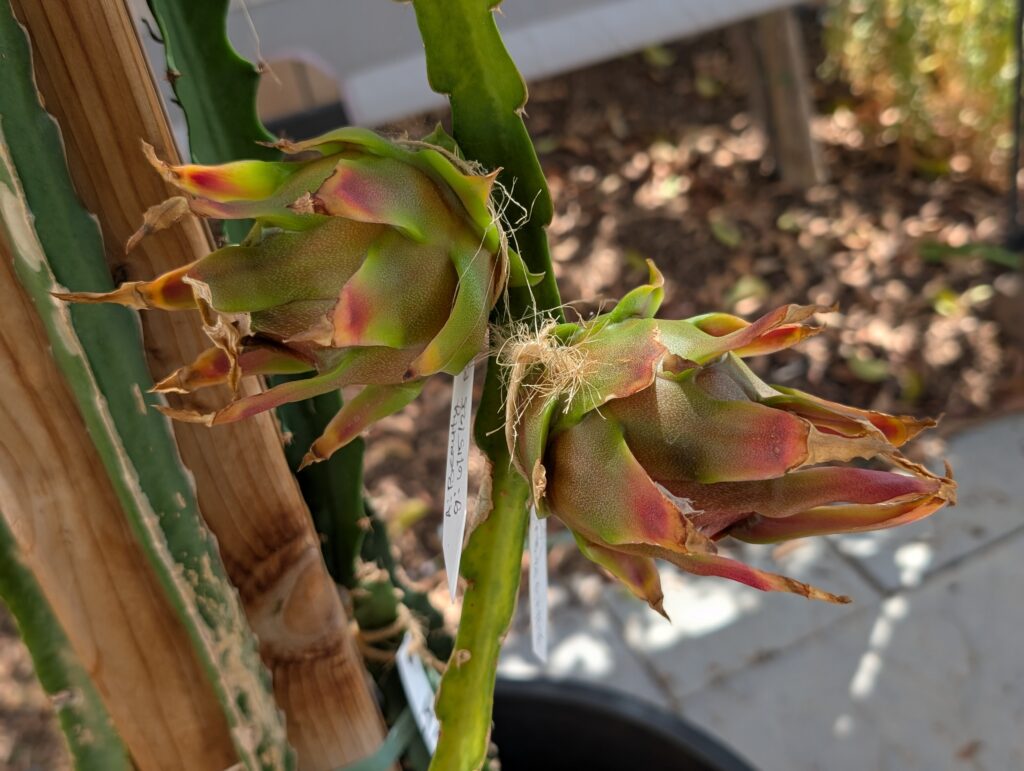
So what gives? Let’s take a closer look.
The vascular system (that’s the xylem and phloem, aka the plant’s plumbing) in the stem snapped.
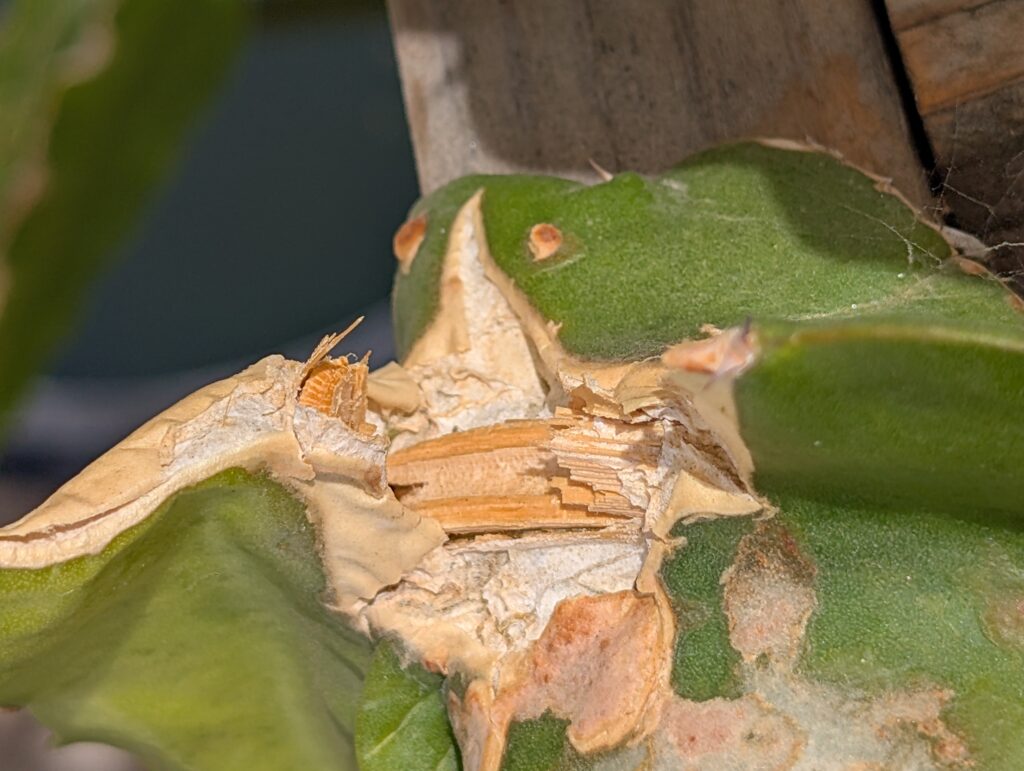
The fruits downstream of that break weren’t going down without a fight. Dragonfruit are what’s called non-climacteric fruit, which means they don’t keep ripening once they’re picked. Bananas, on the other hand, are climacteric — they’ve got that special ripening chemistry that lets them finish the job after harvest. Dragonfruit don’t get that luxury.
Sidenote: this is also part of why dragonfruit get such a bad rap. People think they’re bland and boring, but that’s mostly because the ones in grocery stores are picked way too early so they can survive shipping without turning to mush. If you wait until a dragonfruit is actually ripe, you’ll get to taste its full sweet, sugary greatness.
If you look at the photos, the dragonfruit on the broken branch was about an inch smaller than the others, but its skin was noticeably more colorful — a sure sign of ripeness.
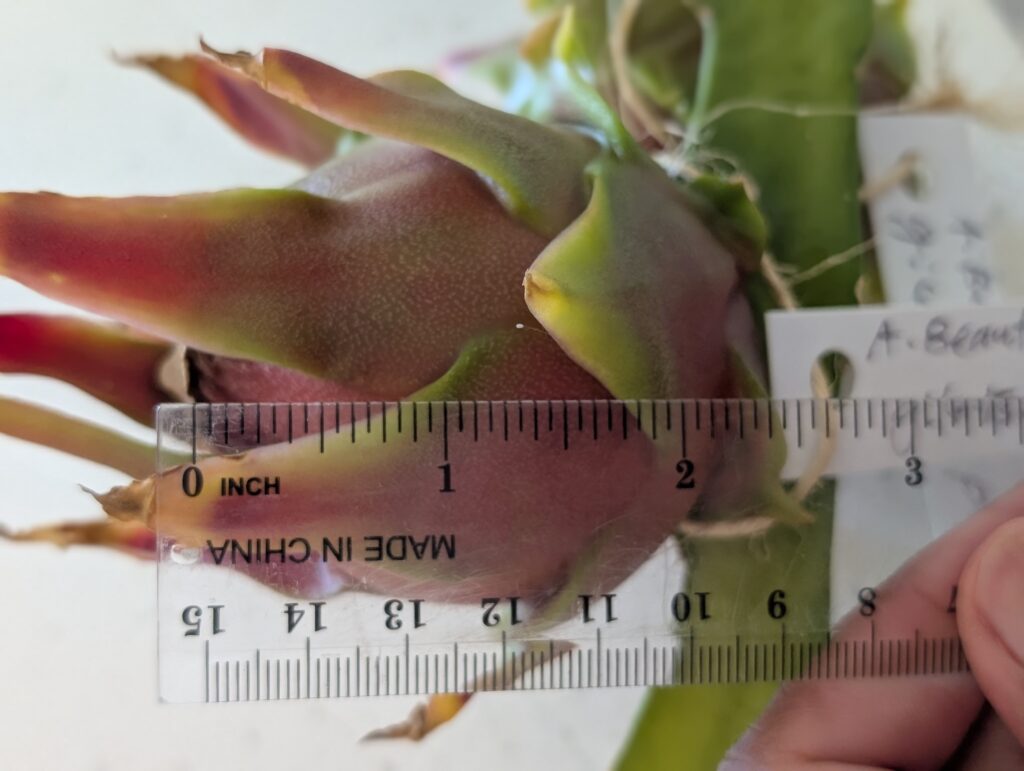
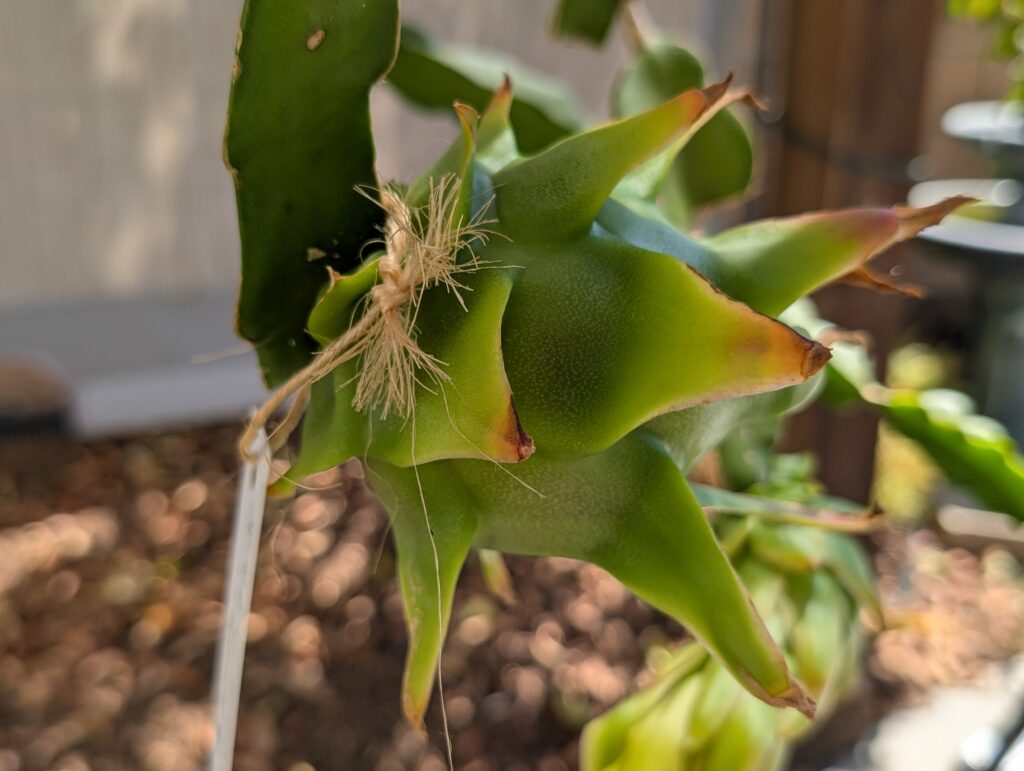
Another tell: a ripe dragonfruit wiggles more easily on the stem, rocking back and forth instead of feeling stiff and locked in place.
Zooming in on the branch, you can see the stem itself is collapsed and pale green, with the vascular bundles almost exposed. Compare that to a healthy stem, which is thick and dark green, and you’ll see the difference.
Desiccated stems
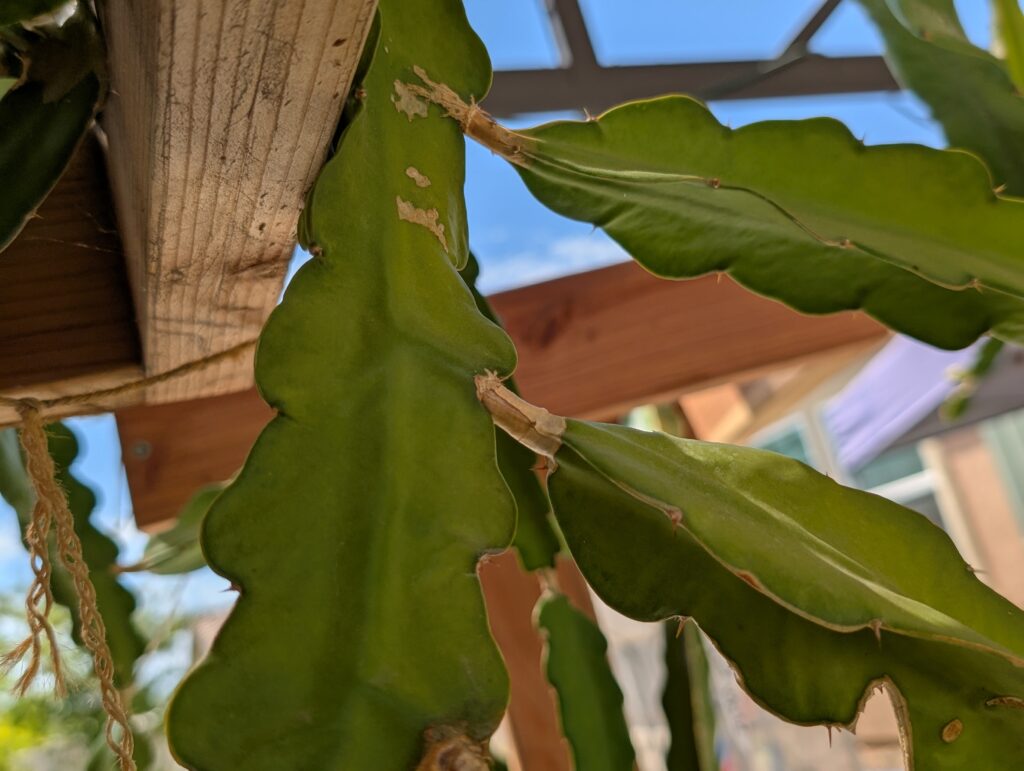
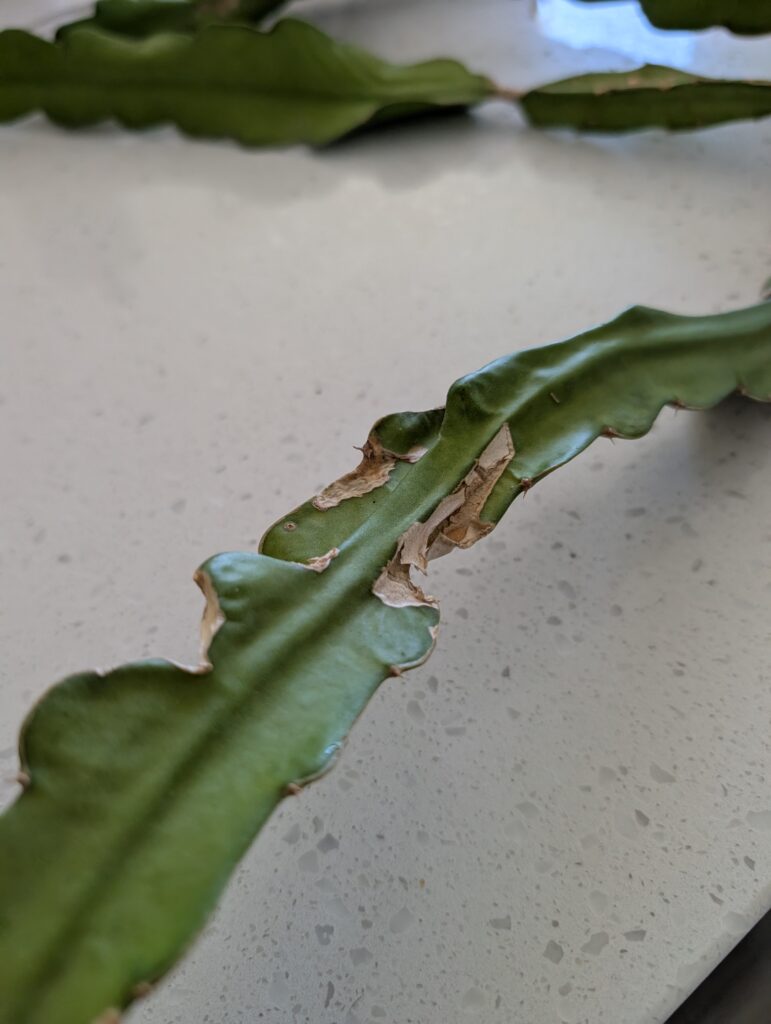
Healthy, plump green stems
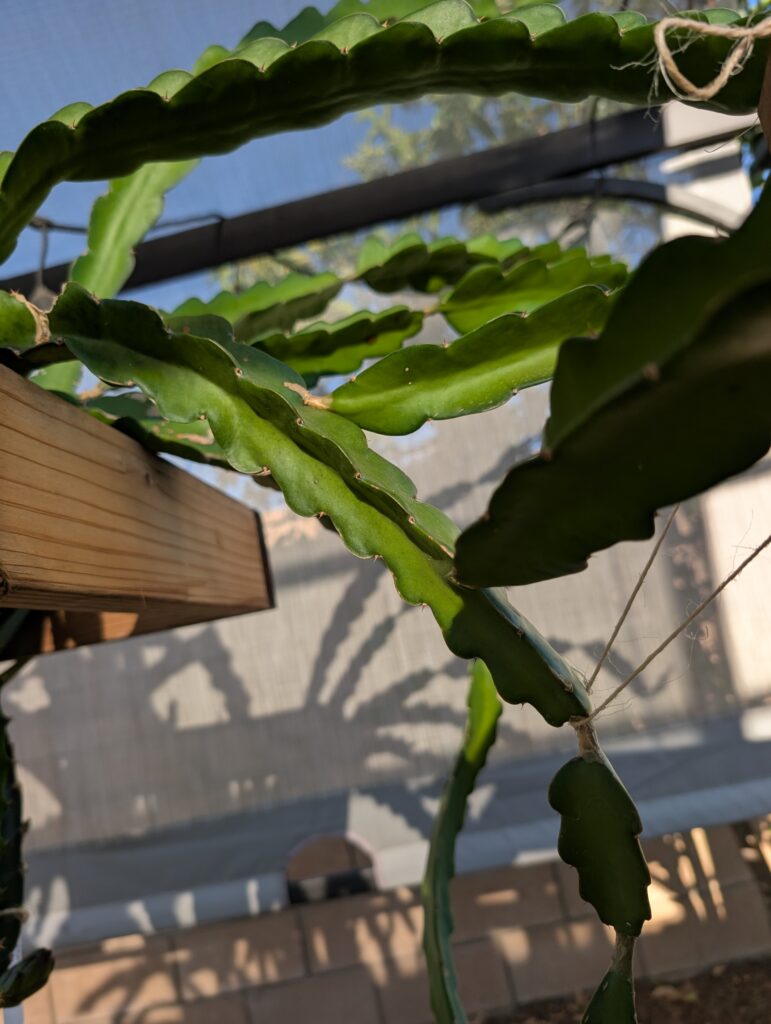
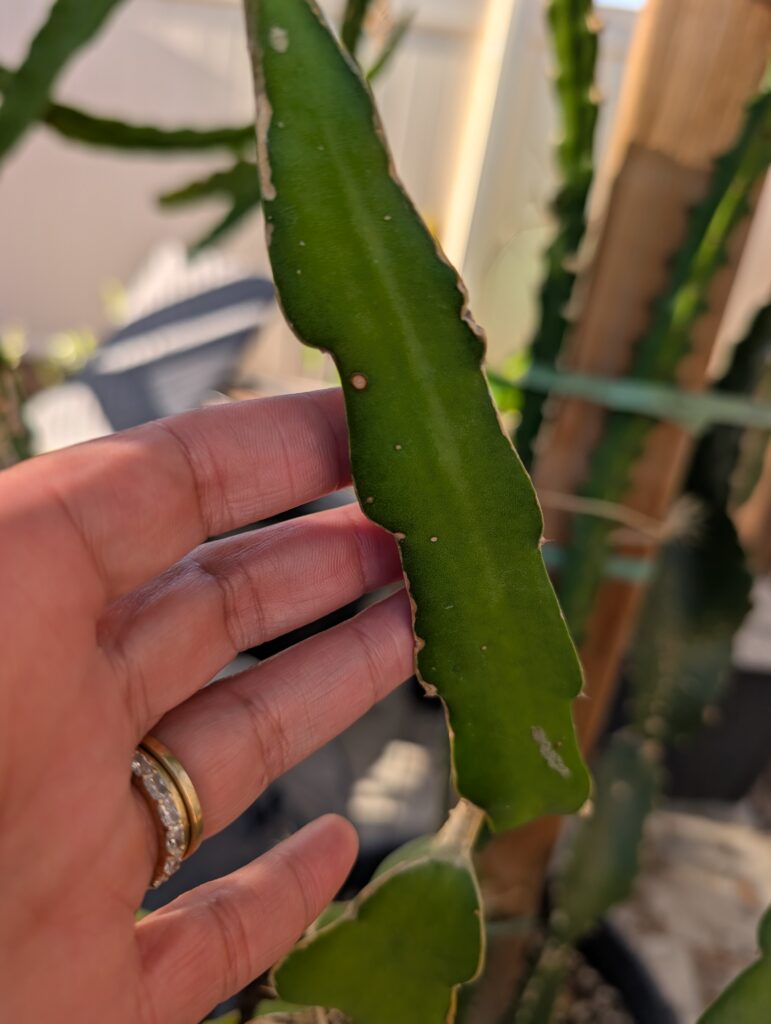
Here’s what’s really happening: once the stem broke, it was basically functionally dead. It couldn’t keep up with the normal flow of nutrients. But plant tissues don’t just shut off instantly — the stem still had stored water and carbohydrates, and the fruit acted like a sink, pulling in whatever was left. In other words, the dying stem funneled its last bit of energy into finishing that fruit, speeding up ripening before the tissue gave out completely — nature’s version of a dramatic exit.
Here are a few more shots of the vibrant purple flesh — no Photoshop, no filters. It really is that deep in color!
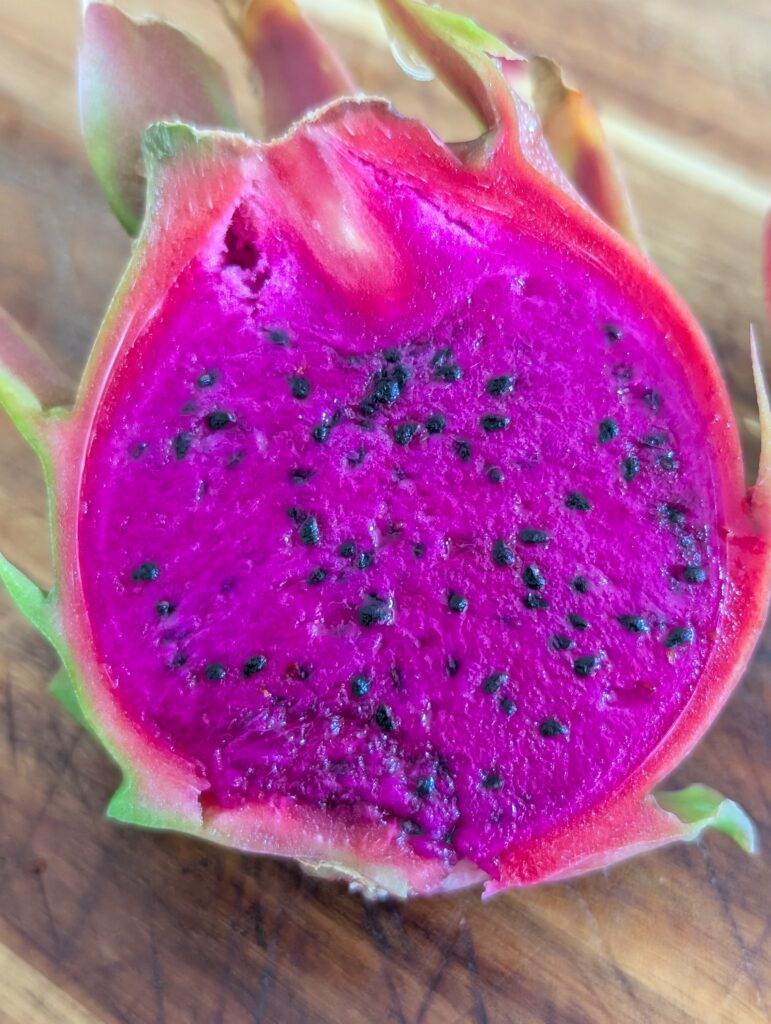
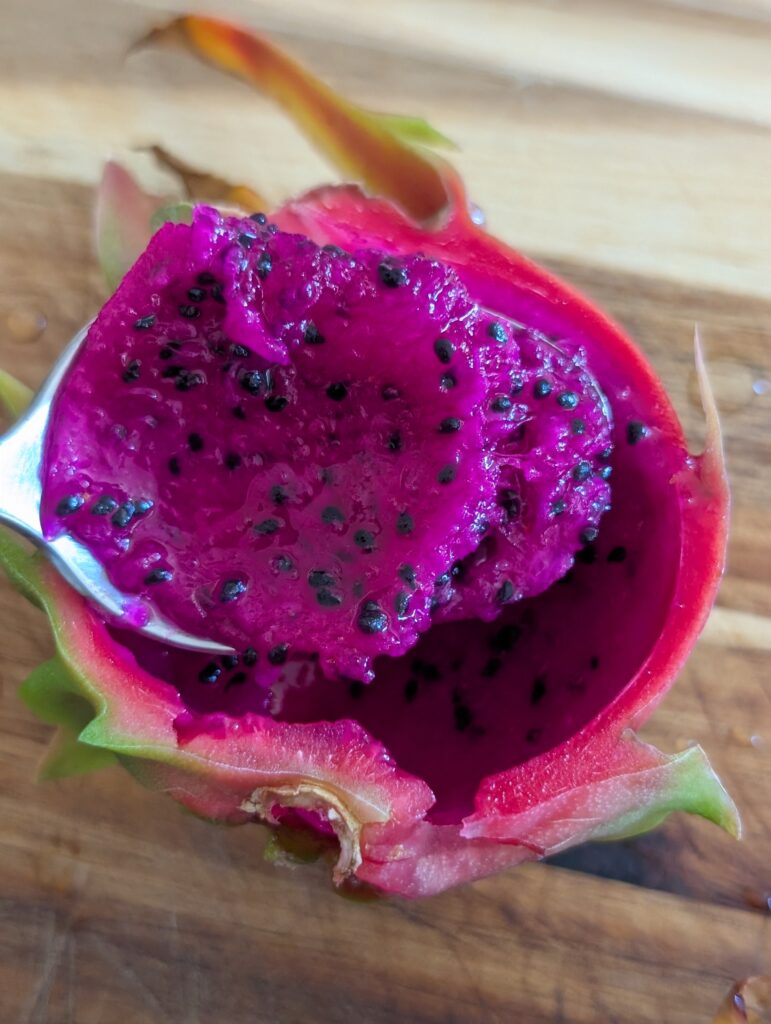
Taste-wise, I’d say it’s sweet. Definitely not as sweet as Palora, but refreshing. There’s an aftertaste I can’t quite describe. Maybe like pomegranate or something.
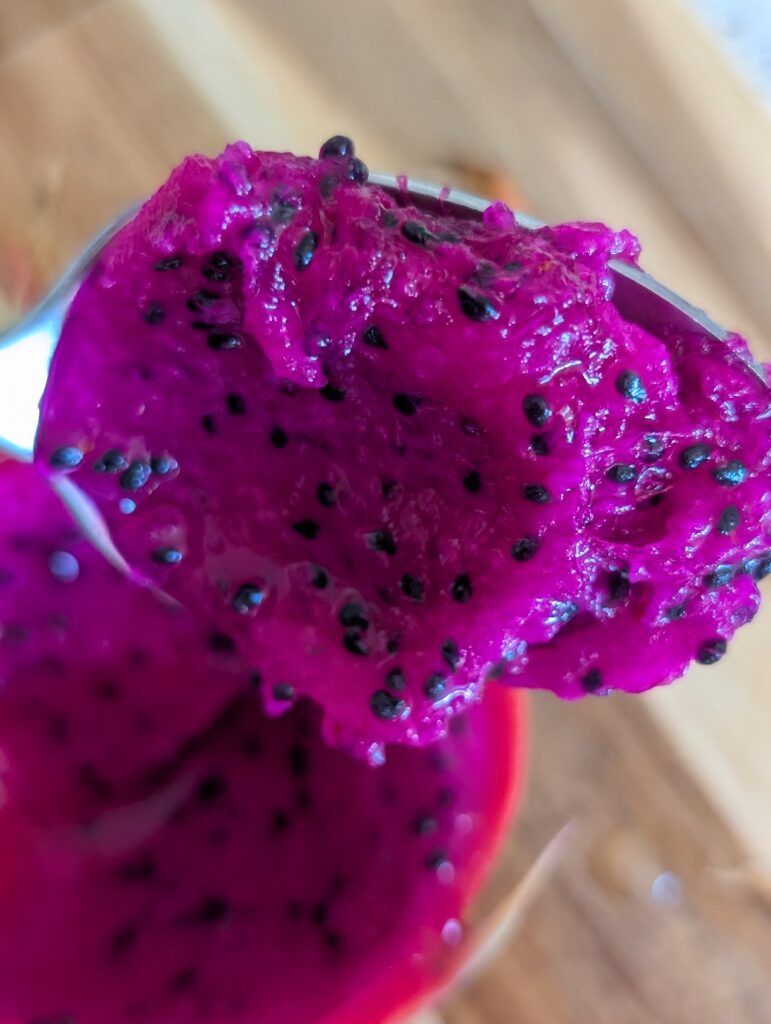
Takeaway: Stress on a plant doesn’t always mean failure — sometimes it triggers the plant to fast-track reproduction, making sure its fruit (and seeds) get a chance at survival.

Leave a Reply